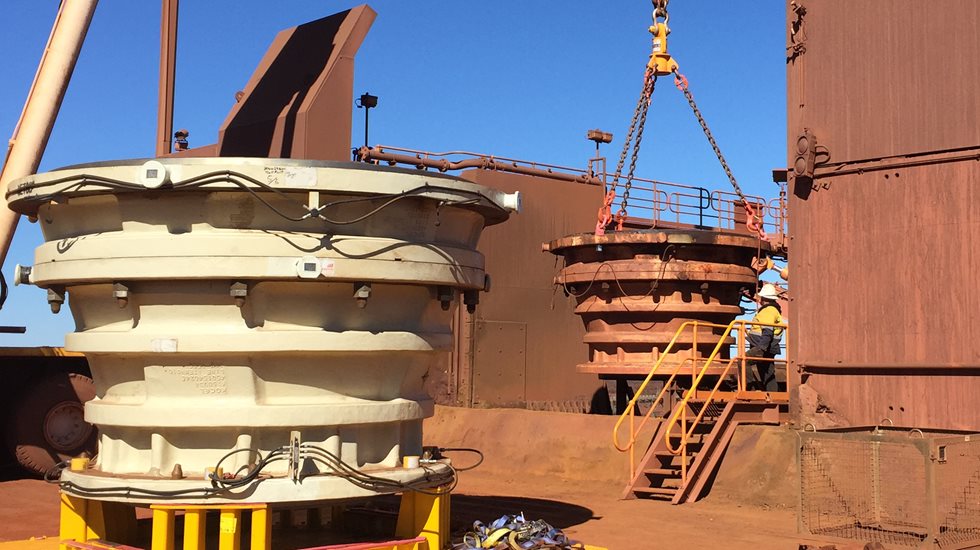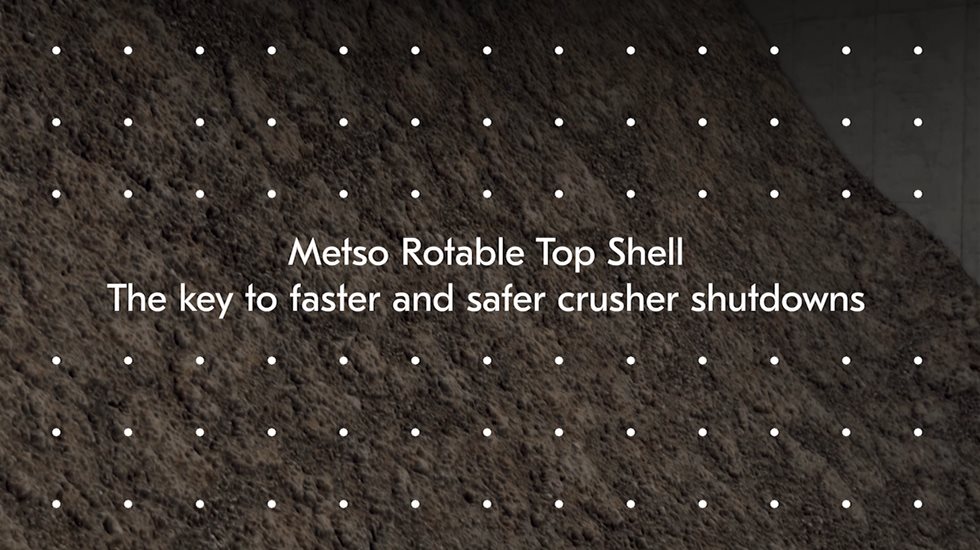Double tier concaves for quick gains in PG relining
The outer lining of a typical gyratory crusher consists of individual pieces called concave segments; each one of these needs to be lifted separately during installation and/or removal. A 60-89 gyratory crusher has a standard lining of 6 tiers of concaves that need to be changed during a planned shutdown event. Normally, all the concaves would be removed piece by piece and new concaves installed.
However, switching to concave segments with a different design is a quick way to reduce both downtime and maintenance. The double-tier concave segments are twice as high as regular linings. This translates to 50% fewer consumable parts to be changed, and ultimately reduces exposure to risks for the crews performing the reline. The same relining methods are used for double tier concaves, so no additional tooling is required. The double tier components can be slightly more difficult to manipulate; however, the plusses often far outweigh any challenges in handling the longer and heavier components.
Carousel and removal trays to cut installation time
For further improvements, using handling tools to manipulate both the worn and new concave segments for removal and installation can bring even further gains. In a large primary gyratory, there can easily be 80 concave segments to lift out and replace (4 tiers with 20 segments per tier). Not only is each individual lift a safety risk, but it is also time consuming as the pieces are lifted one by one.
For removals of the older worn concaves, an entire tier of segments can be lifted at the same time using concave removal trays. This significantly cuts down on the number of lifts required. In the example with 80 concave segments, this would cut the number of lifts from 80 to 4. The same logic applies to using a concave carousel for the installation of the new tiers of concaves. The carousel can be used to install an entire tier of replacement concaves, thereby also reducing the number of lifts from 80 to 4 for the entire installation sequence. By reducing the number of lifts, risk exposure and maintenance times are reduced.
In terms of overall time, using these two handling systems in combination typically cuts reline time in half. Each carousel and removal tray is custom designed to fit the specific PG model and chamber profile. Investing in these tools carries initial investment costs, but pays itself back with increased uptime as well as improving safety thanks to the reduced number of lifts.
Maximizing primary gyratory uptime with rotable top shells
For customers who require the highest levels of availability from their Primary Gyratory, there is a third option to consider. Rotable top shells are complete shell segments relined in advance (either on or off-site) and ready to be installed once the existing shell segments are removed with their worn concaves still in place.


